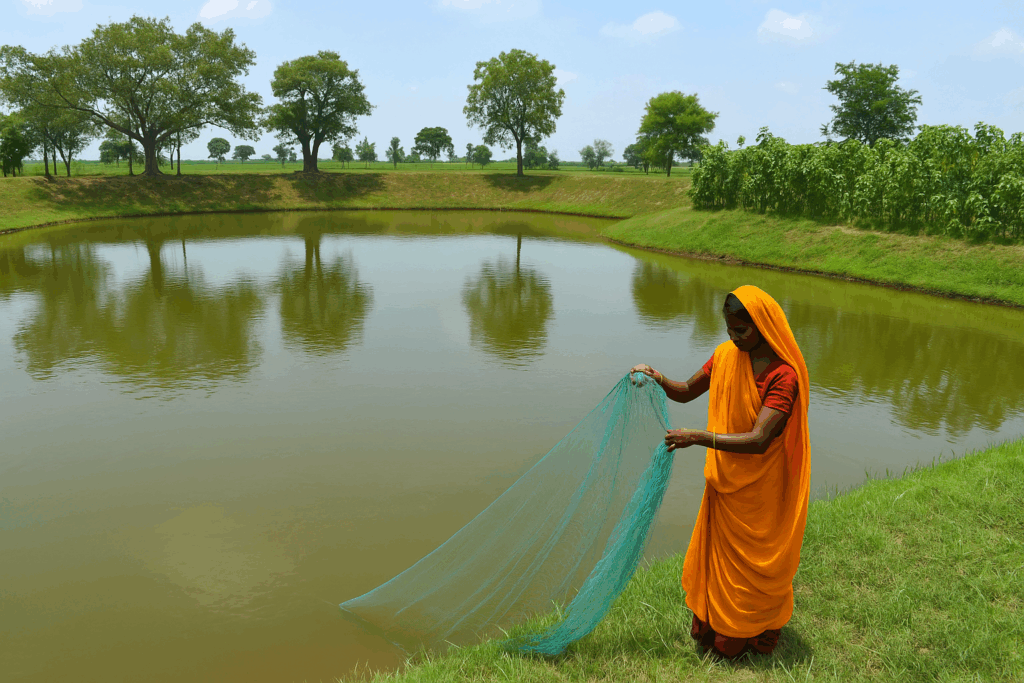
Bihar: Bihar is emerging as a model for integrated rural development, with the state government’s twin focus on water conservation and livelihood generation beginning to bear fruit. Under the leadership of Chief Minister Nitish Kumar, a series of grassroots initiatives are transforming village economies while tackling the threat of water scarcity.
At the heart of this strategy is the construction of Amrit Sarovars—artificial ponds created in gram panchayats to harvest rainwater. Funded through the 15th Finance Commission, these lakes span roughly two acres each and are being used not just for irrigation and groundwater recharge, but also as a platform for rural employment. Overseen by Panchayati Raj representatives, the lakes are becoming multifunctional assets.
One notable success is the involvement of Jeevika Didis, members of women’s self-help groups, who are now farming fish in these ponds. With an annual support of ₹5,000 per woman from the state government, the initiative is strengthening female participation in the rural economy and offering a steady source of income in areas with limited employment options.
The state has so far developed 2,613 Amrit Sarovars, with each site contributing to both ecological resilience and economic opportunity. Around the lakes, shady trees such as banyan and peepal are being planted using the Miyawaki afforestation method, creating green public spaces that double as community recreation zones and relief spots during heatwaves. Some ponds are also supporting local tourism, makhana cultivation, and beautification projects.
Alongside new water bodies, Bihar’s Jal-Jeevan-Hariyali Abhiyan is reviving traditional water sources, renovating over 25,000 public wells and building more than 18,000 soak pits across the state. These measures are designed to boost groundwater recharge and ensure access to clean water in rural households.
Rainwater harvesting has also become a policy priority. Government buildings, especially those under the Panchayati Raj Department, are now mandated to include harvesting structures—costing an estimated ₹65,600 for sandy soil and ₹95,000 for other types. The Building Construction Department has issued standardised designs, and the absence of such infrastructure can result in project disqualification.
Funding for these wide-ranging interventions continues to come from the 15th Finance Commission, allowing for decentralised planning and transparent implementation at the village, block, and district levels.
By linking natural resource management with economic development, the Bihar government is not only tackling the state’s chronic water challenges but also creating a replicable model of rural transformation. These efforts are strengthening the foundations of climate resilience, improving gender equity in economic participation, and reinvigorating public spaces at the heart of village life.






